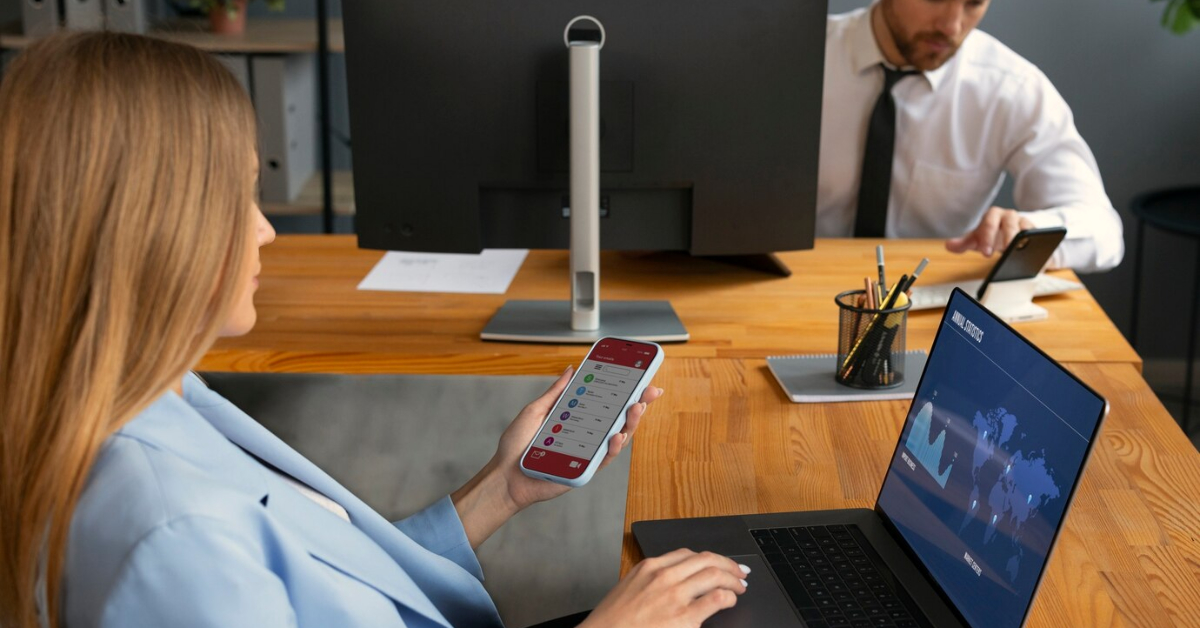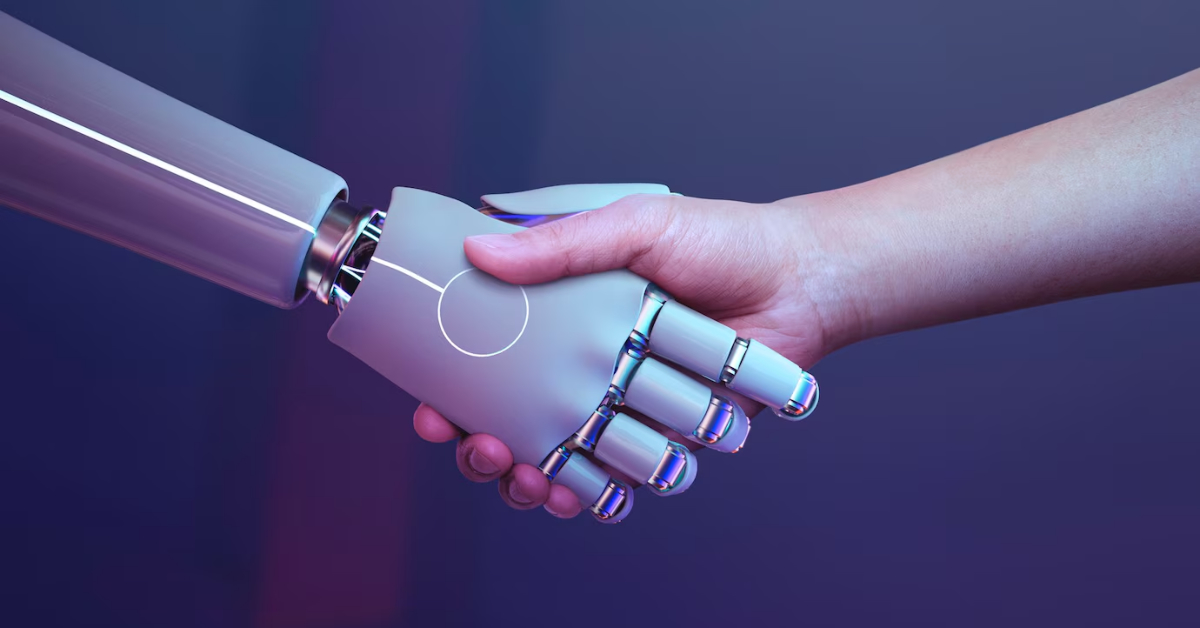Key Takeaways
- Get ahead by using automated tools to quickly find, screen, and hire the best people for your team.
- Use automation to source candidates, screen resumes, assess skills, schedule interviews, and check references.
- Build a better workplace by using fair and consistent automated hiring practices to find talented and diverse employees.
- See how automation is changing hiring and learn the best ways to use it to make your company stronger.
Organisational growth and success depend on recruitment.
Nevertheless, traditional recruitment practices are tedious and time-consuming, and they rely on manual work. This reduces productivity and efficiency. Among other things, these include automation, machine learning, and AI, which modern technologies are bringing to recruitment to optimise it.A Zippia study reflecting a good view of how artificial intelligence has influenced recruiting efficiency is that 67 per cent of recruiters say that artificial intelligence has improved the hiring process. Therefore, recruitment automation saves you time by eliminating manual tasks in recruitment, such as screening resumes, interviewing, and hiring new employees. Recruiters can use this time to focus more on higher-level tasks like building relationships with potential candidates.
This article will discuss how automation can assist in boosting productivity and efficiency in the most basic recruitment activities, such as sourcing, screening, evaluating, interviewing candidates, and onboarding hires. In this article, we will also see the benefits of automated recruitment and what practices companies must adopt to leverage automation.
Automating Sourcing and Attracting Candidates
Sourcing or identifying suitable candidates for open positions is one of the most time-intensive manual tasks in recruitment. Automated sourcing tools powered by AI can source candidates from multiple channels, such as job portals, LinkedIn, GitHub, online forums, and internal databases, to make hiring employees as easy as hiring a student using a chemistry AI solver solution.
In 2023, Forbes reported that 73 per cent of talent leaders will use AI-based tools for candidate sourcing. The matching of candidates’ resumes with job descriptions is done using semantic search, data mining, machine learning, and natural language processing. It allows for contextualised searches and reduces the time spent on manual sourcing.
Chatbots and digital assistants are also gaining popularity for screening candidates at high volumes and scheduling interviews with qualified applicants automatically. Chatbots interact with candidates via messaging apps and email to source relevant candidates. They also answer repetitive applicant queries, thereby improving the experience and enabling recruiters to focus on more value-added responsibilities.
Streamlining Screening with Automated Tools

Screening hundreds of inbound resumes requires no software, is biased and takes a lot of time to do it manually. AI-powered automated pre-screening tools can screen all the applicants against pre-defined criteria within seconds.
A 2024 Forbes report indicates that about 70% of employers are going to use automated screening before human review. These are tools that scan resumes to identify the required qualifications, skills, certifications, and previous experience. They will rank and shortlist candidates who fulfil the minimum job criteria, and they will send only qualified profiles to recruiters for further assessment. Quickly filtering out unqualified applicants is what this process does.
Some automated screening tools also assess cultural fit using psychometric assessments, online interviews, and games. They gauge abilities, cognitive skills, personality traits, and fitment with company values. This data further assists recruiters in deciding which candidates to move forward with. Automated screening thus enhances the speed and quality of hiring.
Assessing Candidates via Automated Tools
Traditional manual assessments are prone to inherent human biases and inconsistencies. Automated assessment tools powered by AI can evaluate candidates across multiple parameters quickly and uniformly.
These tools assess hard skills using different formats, like online coding tests, data analytics assessments, simulations, and skill-based questionnaires. They gauge soft skills and culture fit through asynchronous video interviews, online psychometric tests and two-way situational judgement tests. Some tools even assess facial expressions and micro-expressions during video interviews to predict traits like honesty.
Such in-depth skill-based assessments provide more profound insights into candidates beyond just resumes. Uniform assessments give all candidates equal opportunity to showcase their abilities. Automated assessments thus make talent decisions more data-driven, fair and objective while reducing manual effort and hiring costs.
Streamlining Interview Processes via Automation

Recruiters have to spend a lot of manual effort in scheduling and coordinating interviews. The automated interview scheduler bots do not require human intervention, as they facilitate communication between applicants and the bots through email or text and allow the applicants to schedule interview slots based on the recruiters’ availability.
Further, automated video interview platforms streamline screening calls and preliminary interviews. Recruiters simply define the job criteria and skills to assess and interview candidates on the platform. It then automatically evaluates candidates on various parameters as they record responses and even transcribe conversations using speech recognition. Such automation enhances the speed and quality of talent decisions.
As per Ideal’s survey, a survey by SmartRecruiters reveals that 42% of recruiters engaged in high-volume hiring utilise AI-driven tools, including automated video interviews, to enhance their recruitment processes. The automated interview process thus minimises repetitive tasks, enabling recruiters to handle more candidates and roles. It also provides convenience and flexibility to applicants.
Automating Reference and Background Checks
Reference checks are crucial, but often very tedious and time-consuming when done manually. Automated reference check tools allow recruiters to simply input candidate details, and the system handles the entire process via emails and online forms.
The platform reaches out to references provided to collect feedback, ratings, and written commentary on candidates’ important parameters. Tools like Checkster automatically compile feedback and provide easy-to-understand candidate reports to support data-driven hiring.
Background screening is also being automated for speed and accuracy. Manual verification of identity, address, education, employment, et,c. requires enormous effort. Automated tools integrate with various databases and online sources to instantly verify candidate backgrounds.
Automation thus reduces turnaround time for reference and background checks from days to just hours, as per Checkster. This accelerates overall hiring velocity.
Streamlining Onboarding with Automation

The average onboarding programme involves nearly 54 distinct tasks, according to TechJury. Such elaborate manual checklists lead to delays, miscommunication, and confusion among new hires, impacting employee experience and retention.
As per an AIHR study, 68% of organisations seek to enhance onboarding processes and adopt automation. Automated onboarding platforms standardize and simplify the entire proces, right from pre-boarding to 90 days post-joining
These tools automatically trigger checklists, forms, and tasks that need completion by new hires, managers, and HR before and after they join. They also allow new hires to seamlessly access policies, tool training, HR documents and resources via self-service portals. Platforms like Betterteam even offer chatbots to address employee queries during the onboarding journey. Automating repetitive onboarding workflows also allows HR teams to deliver more personalised mentoring at the start.
Benefits of Automation in Recruitment
The various automation solutions discussed have delivered immense benefits across the hiring funnel, including:
- Enhanced Productivity. Automating manual and repetitive recruitment tasks has led to an improvement in productivity, according to Ideal. This allows recruiters to manage more job openings and hire faster.
- Reduced Time-To-Hire. Streamlined sourcing, screening, and assessments have cumulatively reduced average time-to-hire by 5-15 days. Automation makes end-to-end hiring significantly faster.
- Cost Savings. Automation in early recruitment stages has contained costs. Reductions in agency costs, job board spending, and HR workloads lead to major cost savings.
- Better Candidate Experience. Higher process efficiency, faster response times, and self-service interaction offered by automated recruitment improve the candidate experience.
- Reduced Bias, More Objectivity. Data-based evaluations and uniform assessments via automation minimise inherent human biases. This brings more objectivity to talent decisions.
- Higher Quality of Hire. Streamlined hiring processes and standardised evaluations enabled by automation improve the quality of hire. Companies can recruit better-suited candidates.
Best Practices for Automated Recruitment

While automation is modernising recruitment, organisations still need a customised implementation focused on value. Some best practices include:
- Choosing Target Areas. Companies should identify and automate high-volume, repetitive and manual tasks where automation can drive maximum efficiency gains.
- Integrated Processes. There should be seamless integration between automated recruitment tools and existing HR systems like ATS for smooth data flow.
- Change Management. Relevant training and communication regarding process changes, new tool usage policies, and required skill upgrades will ensure organisational readiness.
- Hybrid Model. A hybrid recruitment model balancing automated screening and human evaluation delivers optimal hiring outcomes. Complete reliance on technology is not advisable.
- Compliance. Strategic automated recruitment solutions deployed would have to have a compliance structure in place at the regional level for data security, privacy protection, and fair and ethical usage.
The Future of Automation in Recruitment
Most leading companies are no longer just automating, but it is now a strategic priority. According to the report, 73 per cent of organisations are investing in automated recruiting solutions, which implies that the scale-up of these investments will be massive in the years to come.
Convexal AI, personal engagement with chatbots, indication advertising, talent intelligence, and predictive studies will promote the upgrade of recruitment into truly technologically propelled fields. At the same time, however, the role of recruiters will continue to be indispensable when it comes to making strategic decisions regarding hiring.
Conclusion
Automation, AI, and modern technologies in recruitment have made the process much more efficient, higher quality, and more enjoyable while saving organisations a lot of money. While technology can’t completely replace human input, a balance that optimises human input and technology is turning out to be the way forward towards future recruitment.




